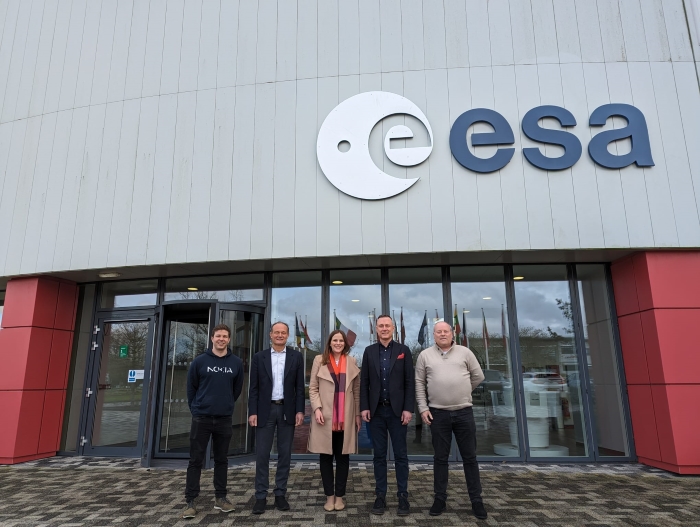European Space Agency partner with Nokia to develop 5G-enabled low-latency solutions

To meet growing connectivity needs, the European Space Agency’s Space for 5G/6G and Sustainable Connectivity programme line, in collaboration with the UK Space Agency (UKSA), has awarded a development contract to telecommunications company Nokia to develop and deploy a satellite-adapted Nokia RXRM Real-time eXtended Reality Multimedia solution at ESA's UK-based 5G/6G Hub.
This commercial agreement follows an initial Memorandum of Intent to collaborate between ESA and Nokia signed in 2023, while the initial installation took place in March 2024.
The technology is already being utilised across situational awareness, teleoperation, remote monitoring, and training. Equipped with a 360° video and spatial 3D audio, it increases the accuracy of what users see, and the speed with which they see it, with near-instant, ultra-HD streaming. This immerses users whether this be for consumer experiences or professional working environments, increasing safety and wellbeing, improving productivity, and more widely contributing to a more sustainable working world.
The 5G/6G Hub, located at the European Centre for Space Applications and Telecommunications (ECSAT), Harwell Science and Innovation Campus, UK, is using RXRM to solve real-world customer problems such as remote inspection of critical infrastructure, demonstrating how space-enabled applications are being used to meet real-world challenges.
The collaboration between Nokia’s multimedia solution with ESA´s satellite connectivity, looks to enable enterprises with remote technical assistance using high quality, 360° video along with 3D OZO audio. With the technology maturing, ESA and Nokia also built an end-to-end telemedicine solution to enable remote support by doctors and other professionals in remote areas.

Secure and reliable connectivity is key to unlocking new economic opportunities across Europe. With an increase in demand for data-intensive applications, such as remote working, wireless connectivity and 5G infrastructure offers an ability for professionals across sectors to improve operational efficiency and their safety.
As the adoption of 5G connectivity continues across Europe, technologies such as RXRM will enable a strong digital and green transformation, enabling a new level of increased employee safety and well-being, quicker and more informed decision making, resulting in cost savings, and productivity gains, benefiting society.
Antonio Franchi, Head of the 5G/6G NTN Programme Office, said: “ESA takes great pride to collaborate with Nokia to develop the required RXRM satellite adaptations, it is key for Europe’s competitiveness to develop and produce such innovative technologies for today and the future. We are looking forward to seeing how RXRM will benefit users across the economy, keeping them secure and connected, at any time anywhere, thanks to the use of 5G and satellite connectivity.”
Sami Ranta, General Manager, RXRM, Nokia, said: “We are proud to work together with the European Space Agency to develop 360° multimedia streaming over satellite in remote areas. Nokia RXRM ensures high-quality streaming, reduced with 90% and more. The solution enables significant cost savings when streamed over satellite connection. We see that satellite communications complement terrestrial 4-5G networks especially in rural and isolated areas.”
Rebecca Irving, Telecoms Investment Lead, UK Space Agency, added: “The UK Space Agency is supporting Nokia UK's RXRM project to help advance connectivity solutions and integrate cutting-edge technologies into the UK's flagship 5G/6G Hub facility at ECSAT. This initiative will provide valuable insights into next-generation real-time XR applications, drive investment, and showcase the UK's capabilities. We look forward to following the next steps, led by Nokia UK, as this project progresses.”
ESA’s Space for 5G/6G and Sustainable Connectivity programme is part of ESA's Advanced Research in Telecommunications Systems (ARTES) 4.0 and demonstrates the essential nature of satellites for 5G and 6G. The programme works with industry to set the standards and frameworks for hybrid and downstream interoperability.


